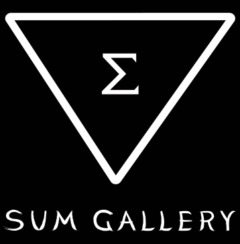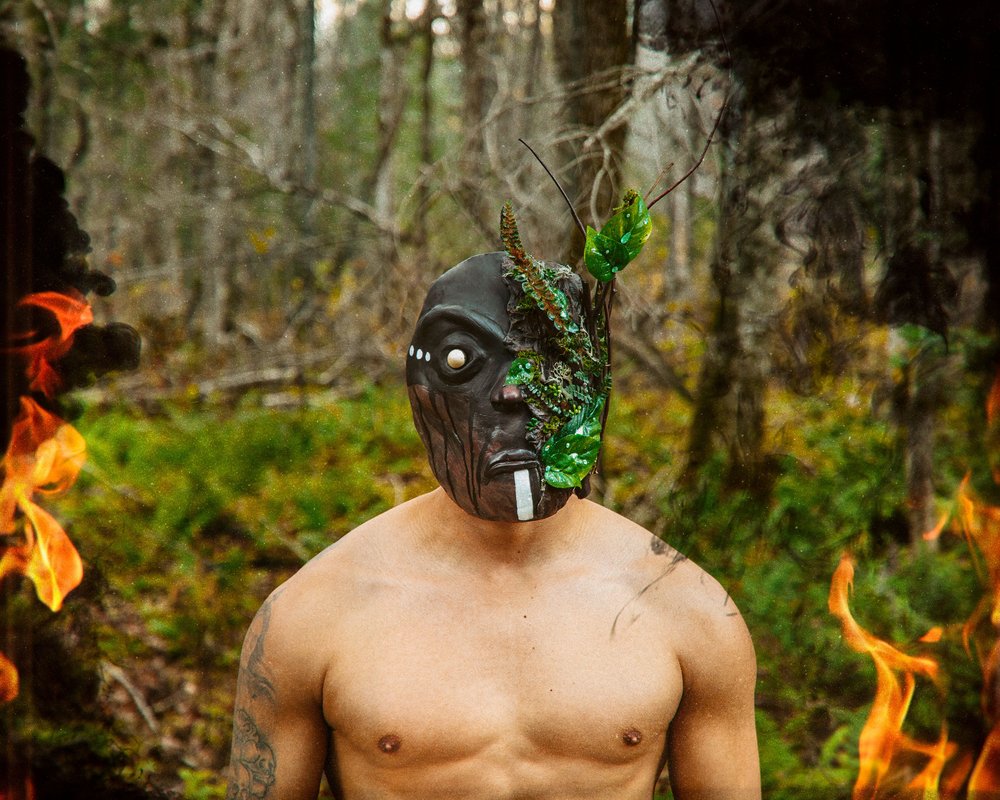BY GAIL JOHNSON, STIR VANCOUVER
SUM gallery presents Sovereignty by Duane Isaac from February 17 to May 14.
MI’GMAQ ARTIST DUANE Isaac fuses photography with contemporary fantastical masks, his work informed by Indigenous knowledge and the queer gaze.
SUM gallery opens its 2022 season with Sovereignty, the Listuguj, Quebec-based photographer and mask-maker’s first solo exhibition in Vancouver. Featuring a series of portraits documenting the Indigenous body in nature, the show speaks to Indigenous and environmental health and survival.
Curated by SUM gallery founding artistic director emeritus SD Holman, Sovereignty is part of the 2022 Capture Photography Festival Selected Exhibition Program.
Stir connected with Isaac to hear more.
Speaking generally, what is it about masks that attracts you and motivated you to incorporate this form into your photography?
People often connect through eye contact, even through a photo the eyes are often inviting. Obscuring this connection forces the mind to look for other things to connect to. I think it’s also a matter of fantasy, that the person behind the mask is a stranger. While the photos are intimate, you really don’t know who’s behind the mask.
Can you tell us about the creative process behind them?
I’ve developed my process over the years. Lots of trial and error. First thing I do is create a basic shape. Every mask begins the same way. Then I decide on outer features that extrude from the mask itself. Ears, horns, random geometric shapes? There’s no limitation but imagination. My materials are either made by me via molds, or items I’ve amassed through various means—yard sales, art-supply stores, etc.
As far as details go, I love baroque design elements. You’ll find my work adorned with cherubs, skulls, insects, roses, and pearls. I love monsters, the occult and anime/cartoonish villain of the week creatures. I like the idea of a beautiful monster or beautiful villain.
So many horror movies use masks for the main character, making them especially terrifying. Do you draw from the genre?
I am definitely a horror fan. I remember growing up with Ghostface, Jason Vorhees, Michael Myers, Leatherface, to name a few. All the greats had a mask. Those elements are definitely an inspiration. Again I’d refer back to my point about obscured faces. You can’t connect to the “human” of a masked villain. There is reason to fear that. I also feel like masks can also bring out the things we wouldn’t normally do without the anonymity they provide.
In Sovereignty, the figure’s mask is said to represent dualism, Indigenous identity as inseparable from and equal to the Land. Can you tell us more?
Historically, Indigenous people have been the stewards of this land. We take care of the land and it takes care of us. It has always been that way. We need it in more ways than it needs us. We need food, water, and medicines. All provided by the land. If the land is sick, we are sick. One prime example would be the many reservations under boil-advisory orders.
The exhibition speaks to sovereignty under threat. Can you expand on this?
So much of the unceded territory in Canada is subjected to devastation from things like chemical waste runoff or rampant expansion of resource extraction. Reserve lands are often in proximity to sites used for pipelines, natural gas exploration, and factories. Often these projects involve “man camps”, which have a troubling link to MMIW [Missing and Murdered Indigenous Women and Girls].
How do your Indigenous ancestry and queerness inform your work?
For years I’ve had this self imposed ostracism from my culture. I felt unaccepted by it because of the anxiety surrounding my sexual orientation. It’s definitely not the typical idea when you think of “Indigenous, or Mi’gmaq, art”. Whenever there’s a call for Indigenous artists, it’s always almost a fetishist expectation of beads, feathers and leather. That’s not to say these aspects aren’t important, they are. I envy those who have these beautiful talents. Sometimes I feel like a fraud compared to them. I appreciate and celebrate every artist who works to preserve, promote and progress traditional craft. My work is definitely through an Indigenous lens though. I am Mi’gmaq, I have spent my entire life surrounded by my culture, in proximity to ceremony, and listening to the language. This will always come through my work.
With the Indigenous lens, there is also a queer lens. It’s again brought through lived experience. I feel this comes through in the fantasy aspects and celebration of the male physique.
For more information, see SUM gallery.

